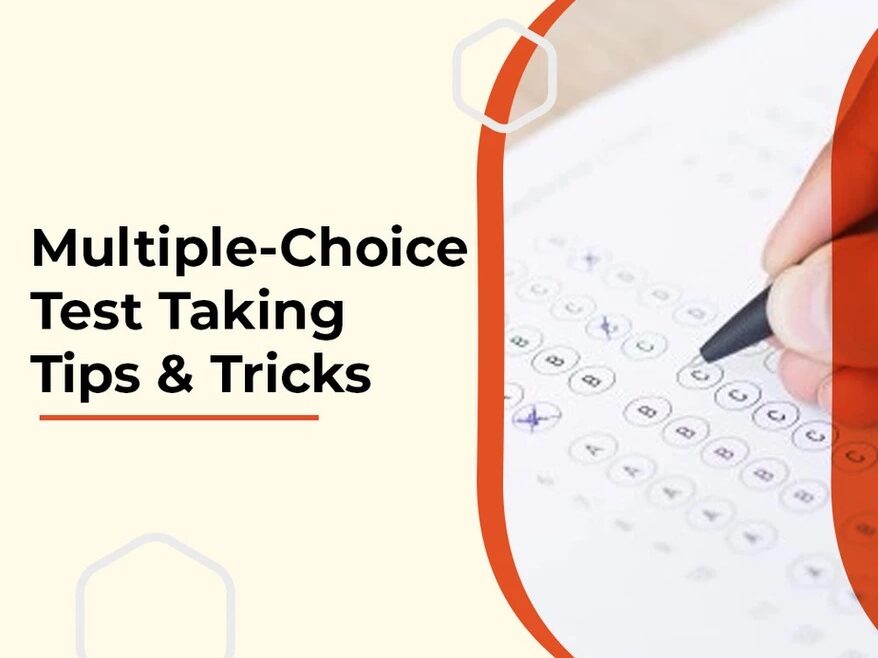Though CBSE has not given enough time before changing the entire evaluation system of subjective type to objective type which opposes their own intentions to foster and encourage the critical thinking, creativity and concept understanding of students. Also this is unjustified for some vast and deep subjects like literature and language to bind within the cage of options which are forced to be right or wrong.
But MCQ system of evaluation shall be faced by students in some or the stage of life. So let us focus on some of the strategies which can be helpful to prepare for upcoming November exams for board students.
Read the entire question.
Read a multi-choice question in its entirety before glancing over the answer options. Students often think they know what a question is asking before reading it and jump straight to the most logical answer. This is a big mistake and can cost you dearly on multiple-choice exams. Read each question thoroughly before reviewing answer options.
Answer it in your mind first.
After reading a question, answer it in your mind before reviewing the answer options. This will help prevent you from talking yourself out of the correct answer.
Eliminate wrong answers.
Eliminate answer options which you’re 100 % sure are incorrect before selecting the answer you believe is correct. Even when you believe you know the right answer, first eliminating those answers you know are incorrect will ensure your answer choice is the correct choice.
Use the process of elimination.
Using the process of elimination, cross out all the answers you know are incorrect, then focus on the remaining answers. Not only does this strategy save time, it greatly increases your likelihood of selecting the correct answer.
Select the best answer.
It’s important to select the best answer to the question being asked, not just an answer that seems correct. Often many answers will seem correct, but there is typically a best answer to the question that your professors are looking for.
Read every answer option.
Read every answer option prior to choosing a final answer. This may seem like a no brainer to some, but it is a common mistake students make. As we pointed out in the previous section, there is usually a best answer to every multiple-choice question. If you quickly assume you know the correct answer, without first reading every answer option, you may end up not selecting the best answer.
Answer the questions you know first.
If you’re having difficulty answering a question, move on and come back to tackle it once you’ve answered all the questions you know. Sometimes answering easier questions first can offer your insight into answering more challenging questions.
Make an educated guess.
If it will not count against your score, make an educated guess for any question you’re unsure about. (Note: On some standardized tests incorrect answers are penalized. For example, a correct answer may be worth 2 points, unanswered question 0 points, and an incorrect answer -1 point. On these tests, you can still make an educated guess, but only when you’re able to eliminate at least one or two incorrect answers.)
Pay attention to these words:
Pay particularly close attention to the words not, sometimes, always, and never. An answer that includes always must be irrefutable. If you can find a single counter example, then the answer is not correct. The same holds true for the word never. If an answer option includes never a single counterexample will indicate the answer is not the correct.
It’s usually best to stick with your first choice–but not always.
It is best to stick with the answer you first chose after reading the question. It is usually counterproductive to constantly second guess yourself and change your answer. However, this doesn’t mean your first answer choice is necessarily the correct answer choice. While multiple choice tests aren’t usually intentionally designed to trick or confuse students, they are designed to test students’ knowledge and ability. To this end, the answer options provided will often include the most common wrong answer among the choices or answers that seem logical but are ultimately incorrect, or the best answer.
“All of the above” and “None of the above”.
When you encounter “All of the above” and “None of the above” answer choices do not select “All of the above” if you are pretty sure any one of the answers provided is incorrect. The same applies for “None of the above” if you are confident that at least one of the answer choices is true.
When there are seemingly two correct answers.
When two answers are correct in a multiple choice question with an “All of the above” option, then it’s probably the correct choice.
Place your bet on the positive option.
In most cases, a positive option is probably true if there is also a negative one.
The more information… the better. More often than not, the correct answer usually contains more information than the other options. This is good to know if you must guess.




